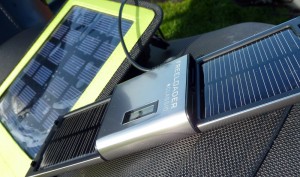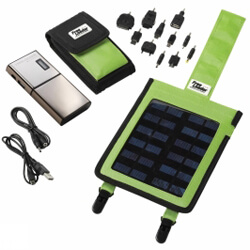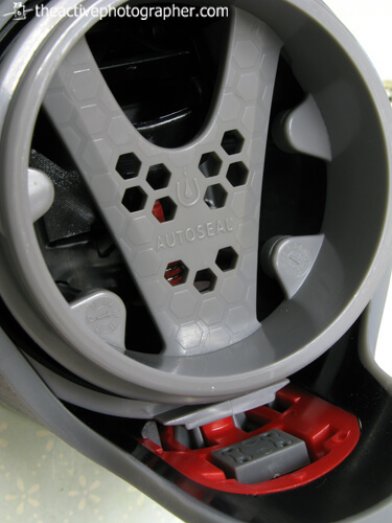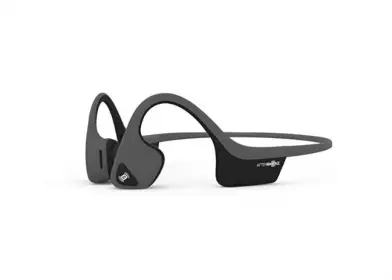Freeloader Classic solar charger
A little while ago I reviewed the MiSuny solar iPhone charger, and after a few weeks I gave up after failing to make two different units work properly.
Now read the sentence above again, replacing ‘MiSuny’ with ‘Freeloader Classic’.
The Freeloader Classic has loads of potential - but it’s a bloody pain on almost every level.
That said, the overriding problem is that no two malfunctions are the same, making this review very difficult to write... and a bit long. Apologies in advance.
Let me describe it. The Freeloader Classic consists of a rechargeable lithium battery encased in a blingy silver metallic shell. The battery unit is about the size of three quarters of a pack of playing cards (maybe a bit narrower) and roughly the same weight (maybe a bit lighter).
So not like that at all, really.
Into one end plugs a similar-looking piece, doubling the unit’s length and turning the whole thing into a neat, slim package that’s very pretty to look at.
The plug-in unit splits into two, revealing a pair of solar panels which can be plugged into either end as sun-catching wings, charging the battery which lies between them. A USB socket in the side of the battery housing gives you the option of charging it from a computer and another socket allows you to add a larger solar panel – the Supercharger (which I also had on test).
A bunch of adaptors supplied in the pack make sure you can charge a number of different types of small portable electric thingies such as digital cameras and handheld gaming devices, although I guess phones will be its main market.
I want to keep this as short as possible, so I’ll skip a bit and just tell you that on first use I charged the battery for the recommended eight hours from my laptop, and this was indicated by four bars in a battery icon which was displayed in a small LCD screen on the unit.
[caption id="attachment_3006" align="alignleft" width="300"] Pretty (rubbish)[/caption]
Pretty (rubbish)[/caption]
The first time I plugged my iPhone 3G in to charge, using the iPhone’s standard white cable (as recommended), the blue LCD panel started to flicker and flash rapidly. The battery icon flickered just as much and my phone buzzed randomly as it started accepting juice… then not – over and over.
In an ideal world the LCD panel would have lit up permanently, the battery icon would have stayed on and the phone would have charged.
Keeping things succinct, the phone charged fine overnight but the same thing kept happening during subsequent attempts, although sometimes it only charged a little bit and at other times it didn’t charge at all. I got in touch with manufacturers Solar Technology International who said it was unheard of but, crucially, they hadn’t been able to test an iPhone 3G during the R&D stage. So they sent another unit in case the first was just generally knackered. It did the same thing. It also happened on Mrs Muz’s iPhone 3G, a friend’s and one belonging to someone at work.
So concerned were Solar Tech that they arranged to send someone to see me on a 140-mile round trip, but I had a eureka moment beforehand. Because my phone is jailbroken (other phones I’d tested weren’t so it couldn’t have been that) I have a percentage value of the remaining battery power on the screen. I realised that the more power I had in the phone when I plugged it in to charge, the better chance there was of the Freeloader behaving itself and the phone fully charging. The less charge the phone had the worse it got, to the point of not charging at all, no matter how nicely I spoke to it.
I emailed my find to Solar Tech who did some quick research. They discovered that the iPhone 3G needed a greater surge of juice when its remaining battery power was below a certain point and the Freeloader was designed to deliver a constant charge at all times. Other iPhone models and phones such as Blackberries and HTC (both of which I also tried and they were fine) only required a steady surge in order to charge.
This, they said, would be designed into the next incarnation of the Freeloader Classic and they thanked GearWeAre for helping the development. No mention of monetary reward though, which was a schoolboy error on my part…
This discovery brought me round to thinking that the Freeloader Classic and Supercharger combo was okay after all – the iPhone 3G problem being its only Achilles heel - and was up there with the Power Monkey in terms of usefulness and versatility, even though the silver casing was starting to scuff a bit.
Then one of the solar wings on the unit I was using died. At first I thought the little flashing asterix on the LCD display had gone off, but if I swapped the wings around the asterix on the other side went off. It was dead. So I switched to the second unit instead.
I’m going to shorten things again here, so bear with me.
Charging the lithium battery using the solar wings and Supercharger is slow. In full, unbroken sunlight it would take about 10 hours from empty if I was lucky. But British weather isn’t often like that and this is the problem I also had with the MiSuny. A decent summer’s day here in Blighty would still have some periods of cloud cover and this slows the charging significantly. Even then we don’t often have decent days like that, and because the Freeloader isn’t waterproof (the Supercharger is weather resistant though) you have to get it indoors at the first sniff of rain.
An alternative would be to leave the unit to charge behind a window, as suggested in the instructions, but because windows filter out most of the energy the solar panels need, this option is barely worth considering. Charging this way can take many days, even a week or more.
My next problem came in such circumstances.
I had left the Freeloader in the conservatory for about three weeks and it had been displaying four bars for around two of those. It was fully charged.
So I took it with me to a weekend festival and planned to keep plugging it in to keep my phone topped up with a good percentage of battery power throughout.
But once we were all tented-up up and settled at the festival I plugged it in only to find the Freeloader’s battery completely empty. It was showing no charge at all and didn’t even make my phone buzz once. I left it overnight just in case but it was no use.
Willing the damn thing to work I put it out in the sun next day but a brand new problem came to light. With nothing plugged in to the Freeloader other than the solar wings and the Supercharger, the LCD was flashing like mad and an icon was telling me that a phone was plugged in to charge. It wasn’t. And here’s another thing with this product – you can’t charge the lithium battery and a phone at the same time. So if it thought a phone was plugged in the wings were doing zip.
I haven’t used it since and I don’t even want to look at it because just the sight of it makes me angry. I sent it to bed without any supper. Me and the Freeloader Classic are no longer friends.
SUMMARY: Just like the MiSuny I really want to like the Freeloader Classic because of its potential. But it’s rubbish.
I fully accept that the initial charging problems are iPhone 3G related and they’re going to fix that (thanks to GWA). I would have forgiven it if it wasn’t for the slow charging, dead panel, mysterious juiceless battery and the schizophrenic phantom phone thing.
[easyazon_link identifier="B004UE7G7M" locale="UK" tag="gearweare-21" title="Solar Technology Classic Freeloader Solar Charger" ] [/easyazon_link]
[/easyazon_link]









